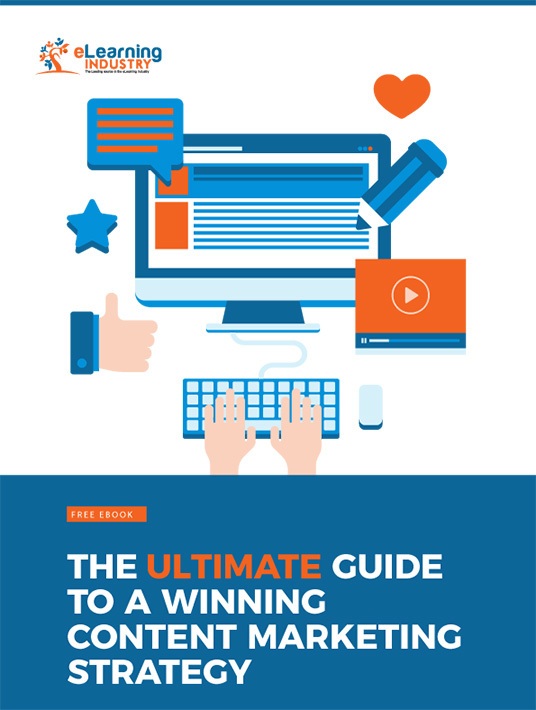How To Take Advantage Of The SEO/SEM And Google Revenue Model
We often forget that at its heart, Google is a commercial entity. It aims to provide a service and get paid for that service. Which means in essence, Google is just like an eLearning organization. So, if you want their business practices to work for you, it helps to abide by their rules. Fortunately, the Google revenue model is relatively transparent. They have told us exactly how they want us to tailor our content for maximum impact. The idea is to get as high as possible in search rankings and the way Google wants us to do that is by developing genuinely useful content.

1. To Pay Or Not To Pay?
There are two main systems of topping Google rankings. One is to use paid keywords. These are words that clients are interested in. A client that wants to buy an eLearning authoring tool may be interested in words like eLearning software, serious games, and so on. Google has mastered the art of identifying these words and tying them to customer needs. So, if your content uses these words effectively, you will be placed higher in the search list. Option 2 is to buy these words from Google. Google will then rank you higher than competitors who haven't paid for the privilege. Rising through the ranks organically takes time. Paying for keywords is faster, but can also be quite expensive. You may want to consider using a bit of both to get your brand the visibility that it requires.
2. Choose Your Keywords Carefully
When you’re selecting the keywords, specificity is key. Google ad words are bought on an auction basis. The more popular a keyword, the more it will cost you. For example, phrases like "LMS" or "eLearning authoring tool" are likely to have a lot of competition. Use specific keywords that are more detailed and will bring your customers straight to you. You can use niche-based words as for example 'extended enterprise LMS' or 'healthcare LMS'. These words will typically cost less, and makes it easier for customers to find you amongst the crowd. The keywords themselves have to be applied in context. Write pieces that tell your customers more about you and offer them useful information. Poorly placed keywords with no background value will not convert into sales.
3. Throw In Some Paid Ads
In addition to keywords, Google has clearly structured ads. They have a pre-set format and design, and are available as plain text or image banners. These ads often target customers by appearing on the pages that they visit. If a customer has shown an interest in video conferencing tools, or has searched for this software in the recent past, Google notices. Google will then feed the customer your ad, even if they’re not necessarily visiting a related site. If the customer clicks on your carefully placed ad, they will be redirected to your landing page. At this point, they will be able to find out more about you. Make sure your site is populated with clear, entertaining content that drives them to buy from you. Google can bring them to your door, but it’s up to you to close the deal.
4. Guest Post On Relevant Sites
Peer review is a large part of Google’s process. If reputable sites link to you, then Google will consider you an authority in that area. In the past, businesses got artificial back-links by leaving spammy comments on other sites. A better strategy is to approach peers and request guest posting opportunities. Write something relevant on their site, and in your sign-off, you can include a link to your own site. If you agree to cross-post, it will help both your rankings. Cross-posting means you write on their site and they write on yours. Make sure your guest post is interesting enough to attract the attention of readers. You can use your social media accounts to attract more customers to the guest post. Above all, write in the style of your host. Remember that this is their 'house' and that your piece must fit seamlessly into their tone. Last, but no least, consider posting an article on eLearning Industry to gain maximum exposure.
5. Make Images Work For You
Photos are a great way to get the attention of potential customers, but there’s one more thing to consider. Did you know images can help search engine rankings as well? Usually when you upload a photo, you just save it as “Image 1” or “May Ad”. That’s a wasted opportunity. Save your images using keywords and descriptive terms. Instead of “LMS promo”, save it as “Responsive Extended Enterprise LMS”. This way, anyone searching for that software will be directed to your site. They will see what products and services you have, and might buy from you. Plus, when Google trawls the net for relevance, your website increases its ranking for extended enterprise and responsive design systems. When you upload your image, you might see options to add a caption or use Alt-text. Use search-engine-friendly words in both these spaces.
SEO and SEM are often handled as distinct approaches. One pays in cash and the other pays in time. For maximum results, use both these practices, SEO/SEM and the Google revenue model, in tandem. Sprinkle relevant keywords in your content, using them sparingly and effectively. Pay for targeted ads that will bring traffic back to your web page. Optimize your images to further boost your rankings. And always keep an eye for Google updates and tweaks in the grand algorithm. It could literally make or break your eLearning marketing efforts.
Are you interested in exploring the basics and benefits of content marketing? Download our eBook The Ultimate Guide To A Winning Content Marketing Strategy to get more tips and tricks on how to determine your KPIs and measure your marketing success, as well as tips to qualify your leads, and tap into the power of smarketing.

